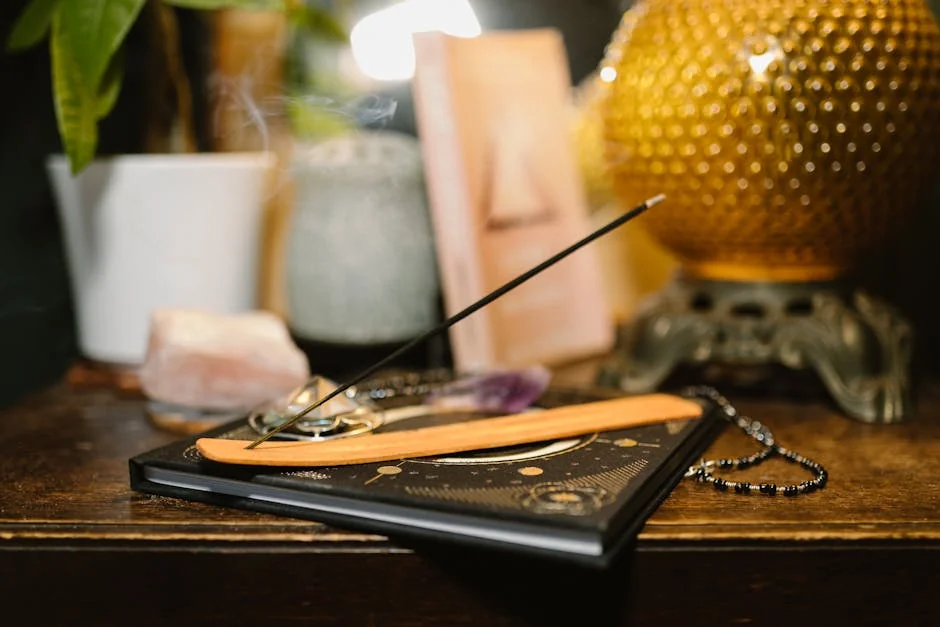Have you ever tried to quiet your mind, only to find it flooded with a chaotic stream of thoughts? What if you could harness that mental energy and direct it toward profound calm and clarity? This is the power of learning how to visualise in meditation. Far from being a complex spiritual practice, visualization is a practical and accessible technique that acts like a mental rehearsal for peace. It’s about intentionally guiding your mind's eye to calming images and positive scenarios, transforming your meditation from a battle against distraction into an engaging, sensory-rich experience.
In this guide, you’ll discover that anyone can cultivate this skill. We’ll walk you through a simple, step-by-step process for beginners and introduce you to several powerful visualization techniques—from crafting your own personal sanctuary to using imagery to manifest goals. Get ready to reduce stress, enhance your focus, and unlock a deeper, more creative layer of your meditation practice.
What is Visualization in Meditation and Why It's So Powerful
Visualization in meditation, often called guided imagery, is the practice of focusing your mind on a specific mental image or scenario to calm your nervous system and train your brain. It’s crucial to understand that this isn't about literally "seeing" a perfect, high-definition picture with your eyes closed. Instead, it's about feeling and sensing the image in your mind's eye. For some, it’s a clear visual; for others, it's more of a strong knowing or a felt sense.
Think of it as dreaming while you're awake, but with intention and focus. Your brain often struggles to tell the difference between a vividly imagined experience and a real one. This is why watching a scary movie can make your heart race. We can harness this same principle for positive benefit.
The power of this practice lies in its direct impact on your mind and body:
- Reduces Stress & Anxiety: By visualizing a calm beach or a serene forest, you can trigger your body's relaxation response, lowering your heart rate and blood pressure.
- Improves Focus & Clarity: Training your mind to hold a single image strengthens your mental muscles, making it easier to concentrate in daily life.
- Enhances Performance & Aids in Goal Achievement: Athletes and performers have used this for decades. By mentally rehearsing a perfect golf swing or a successful speech, you build neural pathways that prime you for success.
- Fosters Creativity and Problem-Solving: Stepping away from logical thought and into the realm of imagery can unlock innovative solutions and new ideas.
- Deepens Your Spiritual Connection: For many, visualization is a tool to connect with a higher purpose, inner wisdom, or a sense of universal energy.
How to Visualize in Meditation: A Step-by-Step Guide for Beginners
Learning how to visualize in meditation is a skill, and like any skill, it starts with simple, manageable steps. Be patient with yourself, and remember that a "wandering mind" is not a sign of failure, but an opportunity to practice gentle redirection.
Find a Quiet Space: Begin by choosing a location where you’re unlikely to be interrupted for 5-15 minutes. This signals to your brain that it’s time to shift gears. If you need help, our guide on how to set up a meditation space can help you create the perfect environment.
Get Comfortable: Sit or lie down in a comfortable position. You can sit in a chair with your feet flat on the floor or cross-legged on a cushion. The key is to keep your spine relatively straight to avoid drowsiness, but not so rigid that you’re tense.
Start with Breath Awareness: Close your eyes and take 5-10 deep, slow breaths. Don't try to control your breath perfectly; just observe the sensation of the air moving in and out of your body. This helps center you in the present moment. For a more structured approach to beginning your practice, you can follow these steps to meditation.
Introduce a Simple Image: Now, bring a basic, static image to mind. A great starting point is a single, glowing candle flame in a dark room. Alternatively, you could imagine a bright red apple, a full moon, or a simple geometric shape like a circle. Don't worry if it's faint or fuzzy.
Engage Your Senses: This is the most critical step for making the visualization vivid. Don't just "see" the image; explore it with your inner senses.
- Sight: What are the colors, shapes, and light like? Is the candle flame flickering?
- Sound: Is it completely silent, or can you imagine the faint crackle of the flame?
- Feel: Can you feel the warmth of the flame on your skin? Is the air cool or warm?
- Smell: Is there a scent? Perhaps the faint smell of wax or the clean air after rain.
Gently Guide Your Mind Back: Your mind will inevitably wander to your to-do list or a random memory. This is completely normal. When you notice it has happened, simply acknowledge the thought without judgment—as if it's a cloud passing in the sky—and gently guide your attention back to your chosen image. If you struggle with a busy mind, a meditation to clear the mind can be a helpful complementary practice.
Gently Conclude the Session: After 5-10 minutes (or whatever time you've set), begin to bring the session to a close. Slowly let the image in your mind fade away. Bring your awareness back to the feeling of your breath, then to the physical sensations of your body in the chair or on the floor. Wiggle your fingers and toes, and when you feel ready, slowly open your eyes.
5 Effective Visualization Techniques to Try
Once you're comfortable with the basic process, you can explore different visualisation techniques to suit your mood and goals.
The Safe Place Visualization
This is a foundational practice for calming the nervous system.
- How to do it: Imagine a place, real or imagined, where you feel utterly safe, peaceful, and content. This could be a sunny beach, a cozy cabin in the woods, or a comfortable room from your childhood.
- Deepen it: Engage all your senses. Feel the warm sand between your toes and hear the rhythmic crash of the waves. Smell the salt in the air. Notice how your body feels completely relaxed and heavy in this space. You can return to this safe place anytime you need to feel grounded.
Goal Manifestation Visualization
This technique uses the brain's power of mental rehearsal to build confidence and clarity toward an objective.
- How to do it: Choose a specific goal, like acing a job interview or finishing a 5k run. Vividly imagine yourself in the scenario, having already succeeded.
- Deepen it: Don't just watch yourself; experience it from your own eyes. Feel the firm handshake, hear yourself answering questions with confidence and clarity, and sense the feeling of pride and accomplishment. The key is to immerse yourself in the positive emotions of the achieved goal.
Body Scan for Healing
This practice directs mindful awareness and healing energy through the body. It's a powerful technique that combines well with a formal how to do body scan meditation practice.
- How to do it: Bring your attention to the top of your head. Imagine a warm, soothing, golden light gathering there. With each inhale, visualize this light slowly flowing down through your body, part by part.
- Deepen it: As the light moves over your shoulders, down your arms, and through your torso and legs, imagine it soothing any tension, discomfort, or fatigue it encounters. Visualize it washing away stress and leaving every cell feeling vibrant and healthy.
Nature Scenes (Beach, Forest)
A classic for deep relaxation, using the inherent tranquility of natural environments. This is an excellent seated practice to pair with a more active how to do walking meditation in nature.
- How to do it: Choose a nature scene you love. A walk through a lush, green forest is an excellent option. Imagine yourself walking along a soft, earthy path.
- Deepen it: See the dappled sunlight filtering through the canopy above. Hear the birds singing and the rustle of leaves in the breeze. Smell the damp, rich scent of soil and pine. Feel the cool, fresh air on your skin. This multi-sensory immersion is profoundly calming.
The Ball of Light Technique
A simple yet powerful technique for managing emotions and cultivating self-compassion.
- How to do it: If you're feeling anxious or scattered, imagine all that chaotic energy gathering in your chest or stomach as a dark, dense cloud or ball. Then, visualize a soft, white or golden light forming in your heart space.
- Deepen it: With each breath, see this light growing brighter and warmer, slowly expanding to envelop the dark ball of difficult energy. Imagine the light dissolving the darkness, transforming it into calm, radiant energy that fills your entire body with a sense of peace and stability.
Mastering the art of visualization in meditation is a journey of transforming the abstract into the tangible within your mind's eye. The techniques explored—from simple shape-holding to immersive mental landscapes—are not ends in themselves, but powerful tools to direct your focus, reprogram your subconscious, and cultivate a profound sense of inner peace. The key takeaway is that consistency matters far more than perfection; a brief, daily practice of five minutes will yield greater results than sporadic, lengthy sessions. Remember to engage all your senses to deepen the experience and approach each session with patience, without judgment for a wandering mind. This practice is a personal exploration, a way to consciously shape your inner world to positively influence your outer reality. You now possess the foundational knowledge to begin. Start small, be kind to yourself, and trust that with each session, you are building a sanctuary of calm and clarity that is always accessible, empowering you to navigate life with renewed intention and serenity.



